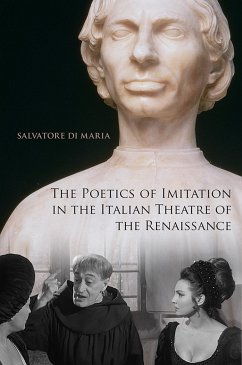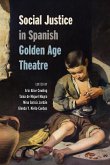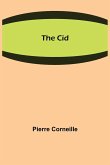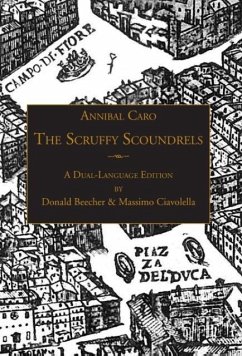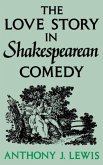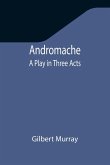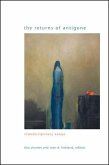Salvatore Di Maria
The Poetics of Imitation in the Italian Theatre of the Renaissance
Salvatore Di Maria
The Poetics of Imitation in the Italian Theatre of the Renaissance
- Gebundenes Buch
- Merkliste
- Auf die Merkliste
- Bewerten Bewerten
- Teilen
- Produkt teilen
- Produkterinnerung
- Produkterinnerung
DiMaria delves into how playwrights not only brought inventive new dramaturgical methods to the genre, but also incorporated significant aspects of the morals and aesthetic preferences familiar to contemporary spectators into their works.
Andere Kunden interessierten sich auch für
![Social Justice in Spanish Golden Age Theatre Social Justice in Spanish Golden Age Theatre]() Erin Alice CowlingSocial Justice in Spanish Golden Age Theatre84,99 €
Erin Alice CowlingSocial Justice in Spanish Golden Age Theatre84,99 €![The Cid The Cid]() Pierre CorneilleThe Cid15,99 €
Pierre CorneilleThe Cid15,99 €![The Scruffy Scoundrels The Scruffy Scoundrels]() Annibal CaroThe Scruffy Scoundrels46,99 €
Annibal CaroThe Scruffy Scoundrels46,99 €![Love Story in Shakespearean Comedy Love Story in Shakespearean Comedy]() Anthony J LewisLove Story in Shakespearean Comedy35,99 €
Anthony J LewisLove Story in Shakespearean Comedy35,99 €![Andromache Andromache]() Gilbert MurrayAndromache16,99 €
Gilbert MurrayAndromache16,99 €![Persians, Seven Against Thebes, and Suppliants Persians, Seven Against Thebes, and Suppliants]() AeschylusPersians, Seven Against Thebes, and Suppliants60,99 €
AeschylusPersians, Seven Against Thebes, and Suppliants60,99 €![The Returns of Antigone The Returns of Antigone]() The Returns of Antigone93,99 €
The Returns of Antigone93,99 €-
-
-
DiMaria delves into how playwrights not only brought inventive new dramaturgical methods to the genre, but also incorporated significant aspects of the morals and aesthetic preferences familiar to contemporary spectators into their works.
Produktdetails
- Produktdetails
- Verlag: University of Toronto Press
- Seitenzahl: 256
- Erscheinungstermin: 18. Juni 2013
- Englisch
- Abmessung: 231mm x 155mm x 23mm
- Gewicht: 499g
- ISBN-13: 9781442647121
- ISBN-10: 1442647124
- Artikelnr.: 37666529
- Herstellerkennzeichnung
- Libri GmbH
- Europaallee 1
- 36244 Bad Hersfeld
- gpsr@libri.de
- Verlag: University of Toronto Press
- Seitenzahl: 256
- Erscheinungstermin: 18. Juni 2013
- Englisch
- Abmessung: 231mm x 155mm x 23mm
- Gewicht: 499g
- ISBN-13: 9781442647121
- ISBN-10: 1442647124
- Artikelnr.: 37666529
- Herstellerkennzeichnung
- Libri GmbH
- Europaallee 1
- 36244 Bad Hersfeld
- gpsr@libri.de
Salvatore DiMaria is a professor in the Department of Modern Foreign Languages and Literatures at the University of Tennessee.
Preface
Chapter I. Imitation: The link between past and present
1. The Humanists turn to the Ancients
2. From the Classical stage to the theater of Renaissance
3. The poetics of the new theater
Chapter II. Machiavelli’s Mandragola
1. The characters: imitation vs. source
2. New characters
3. Machiavellian morality
Chapter III. Clizia. Form stage to stage
1. The sons
2. The fathers
3. The wives
4. A Machiavellian perspective
Chapter IV. Cecchi’s Assiuolo: An apian imitation
1. A contaminatio of sources
2. Ambrogio: An original amator senex
3. Oretta’s immorality as a reflection of the times
Chapter V. Groto’s Emilia: Fiction meets reality
1. From the sources to the adaptation
2. The stage pretense of realism undermined
3. Erifila: a Venetian courtesan.
Chapter VI. Gli duoi fratelli rivali. Della Porta adapts Bandello’s prose
narrative to the stage
1. The source’s King vs. the play’s Viceroy
2. Eufranone vs. Lionato
3. The women
4. New characters and the comic element
Chapter VII. Orbecche: Giraldi’s imitation of his own prose narrative
1. The plot
2. Orbecche and the question of womanhood
3. Sulmone vs. Malecche: The debate on kingly prerogatives
4. Machiavellian princeship anchored to religious morality
Chapter VIII. Dolce’s Marianna: From history to the stage
1. The historical source
2. Josephus’ Herod vs. Dolce’s Erode
3. Mariamme vs Marianna
4. Erode and the theater audience
Conclusion
Endnotes
Bibliography
Chapter I. Imitation: The link between past and present
1. The Humanists turn to the Ancients
2. From the Classical stage to the theater of Renaissance
3. The poetics of the new theater
Chapter II. Machiavelli’s Mandragola
1. The characters: imitation vs. source
2. New characters
3. Machiavellian morality
Chapter III. Clizia. Form stage to stage
1. The sons
2. The fathers
3. The wives
4. A Machiavellian perspective
Chapter IV. Cecchi’s Assiuolo: An apian imitation
1. A contaminatio of sources
2. Ambrogio: An original amator senex
3. Oretta’s immorality as a reflection of the times
Chapter V. Groto’s Emilia: Fiction meets reality
1. From the sources to the adaptation
2. The stage pretense of realism undermined
3. Erifila: a Venetian courtesan.
Chapter VI. Gli duoi fratelli rivali. Della Porta adapts Bandello’s prose
narrative to the stage
1. The source’s King vs. the play’s Viceroy
2. Eufranone vs. Lionato
3. The women
4. New characters and the comic element
Chapter VII. Orbecche: Giraldi’s imitation of his own prose narrative
1. The plot
2. Orbecche and the question of womanhood
3. Sulmone vs. Malecche: The debate on kingly prerogatives
4. Machiavellian princeship anchored to religious morality
Chapter VIII. Dolce’s Marianna: From history to the stage
1. The historical source
2. Josephus’ Herod vs. Dolce’s Erode
3. Mariamme vs Marianna
4. Erode and the theater audience
Conclusion
Endnotes
Bibliography
Preface
Chapter I. Imitation: The link between past and present
1. The Humanists turn to the Ancients
2. From the Classical stage to the theater of Renaissance
3. The poetics of the new theater
Chapter II. Machiavelli’s Mandragola
1. The characters: imitation vs. source
2. New characters
3. Machiavellian morality
Chapter III. Clizia. Form stage to stage
1. The sons
2. The fathers
3. The wives
4. A Machiavellian perspective
Chapter IV. Cecchi’s Assiuolo: An apian imitation
1. A contaminatio of sources
2. Ambrogio: An original amator senex
3. Oretta’s immorality as a reflection of the times
Chapter V. Groto’s Emilia: Fiction meets reality
1. From the sources to the adaptation
2. The stage pretense of realism undermined
3. Erifila: a Venetian courtesan.
Chapter VI. Gli duoi fratelli rivali. Della Porta adapts Bandello’s prose
narrative to the stage
1. The source’s King vs. the play’s Viceroy
2. Eufranone vs. Lionato
3. The women
4. New characters and the comic element
Chapter VII. Orbecche: Giraldi’s imitation of his own prose narrative
1. The plot
2. Orbecche and the question of womanhood
3. Sulmone vs. Malecche: The debate on kingly prerogatives
4. Machiavellian princeship anchored to religious morality
Chapter VIII. Dolce’s Marianna: From history to the stage
1. The historical source
2. Josephus’ Herod vs. Dolce’s Erode
3. Mariamme vs Marianna
4. Erode and the theater audience
Conclusion
Endnotes
Bibliography
Chapter I. Imitation: The link between past and present
1. The Humanists turn to the Ancients
2. From the Classical stage to the theater of Renaissance
3. The poetics of the new theater
Chapter II. Machiavelli’s Mandragola
1. The characters: imitation vs. source
2. New characters
3. Machiavellian morality
Chapter III. Clizia. Form stage to stage
1. The sons
2. The fathers
3. The wives
4. A Machiavellian perspective
Chapter IV. Cecchi’s Assiuolo: An apian imitation
1. A contaminatio of sources
2. Ambrogio: An original amator senex
3. Oretta’s immorality as a reflection of the times
Chapter V. Groto’s Emilia: Fiction meets reality
1. From the sources to the adaptation
2. The stage pretense of realism undermined
3. Erifila: a Venetian courtesan.
Chapter VI. Gli duoi fratelli rivali. Della Porta adapts Bandello’s prose
narrative to the stage
1. The source’s King vs. the play’s Viceroy
2. Eufranone vs. Lionato
3. The women
4. New characters and the comic element
Chapter VII. Orbecche: Giraldi’s imitation of his own prose narrative
1. The plot
2. Orbecche and the question of womanhood
3. Sulmone vs. Malecche: The debate on kingly prerogatives
4. Machiavellian princeship anchored to religious morality
Chapter VIII. Dolce’s Marianna: From history to the stage
1. The historical source
2. Josephus’ Herod vs. Dolce’s Erode
3. Mariamme vs Marianna
4. Erode and the theater audience
Conclusion
Endnotes
Bibliography

